Your complete guide to (myofascial) trigger points
Trigger points are those tender lumps in muscles that therapists find. This article covers what they are, what they do, and how they are... Read Article
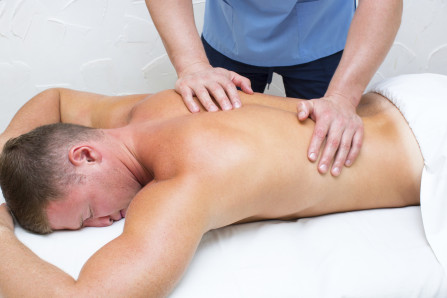
Sports massages are said to help with recovery after sports or exercise, but do they, and are they worth getting? There are also several self massage options available- are they effective?
When we looked at the clinical trials and other scientific evidence we found that while some types produced excellent results others (including some that are very common and heavily promoted) didn’t. In this guide we will share these results with you
Also, as a bonus the massage that gave the best results is one you can actually do yourself, which means you can enjoy the benefits and save a lot of money.
The types of sports massage we will look at
An overview of what you need for recovery
How well do massages do this
Your best options to help recovery
Appendix: summary of scientific evidence
References
Most will be familiar with conventional massage by a professional therapist. These use a variety of techniques that can simply be described as pressure, rubbing and friction. The actual massage you receive will depend on the skills and preferences of the therapist, and the goal of the therapy (eg. recovery vs remedial therapy). Because of this these massages vary considerably.
This is where the head or pad of a vibration massager is placed on the surface while the therapeutic vibrations penetrate. Trials show that this is the most effective massage, and if you have the correct machine you can do it yourself. Because of this we have a guide to using this therapy below.
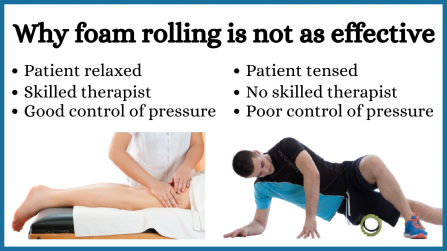
These are tools used to apply conventional massage to oneself. However, because of the issues shown in this infographic foam rolling is generally no where near as effective as a conventional massage by a professional therapist, and the clinical trial results have been poor.
While vibration massagers have a pad that sits on the surface and sends in vibrations massage guns (percussion massagers) are designed to drive their heads into your muscles. As discussed in the guide Are massage guns scientifically proven , marketers make a lot of dubious claims about these, while they are actually have minimal benefits and are dangerous.
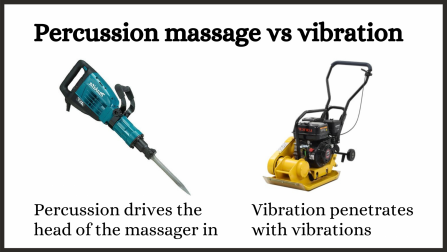
The easiest way to understand why massage guns are ineffective and dangerous is to use the analogy of the two machines pictured in this diagram.
Following from this analogy, while massage guns vibrate:
As discussed in the guide Are massage guns scientifically proven , there is no scientific evidence supporting these. The main issues are:
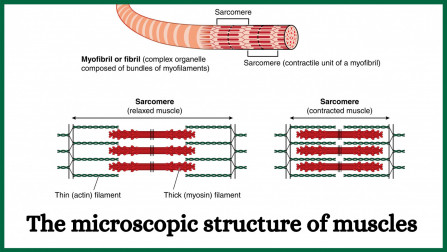
Strenuous exercise can cause microscopic damage to the muscle fibres shown in this diagram. Until this damage is repaired you may have stiffness and soreness, and there will be a reduction in strength and endurance.
To help recover faster we recommend a complete recovery strategy including sufficient rest, sleep, hydration and nutrition. We provide this in our guide The practical, science based guide to post exercise recovery , however massage can help by:
In the next section we look at how well science says each of the massages do this.
In this section we will summarise how well each type of massage does this. For those who want more details we’ve put details of the clinical trials and other science in the appendix below.
Conventional massage relaxes muscles and increases blood flow so it should help both help reduce post exercise soreness and stiffness, and help muscles regain their strength faster. However, the large number of clinical trials conducted have only shown:
The trials of vibration massage show that this can give an excellent reduction in post exercise soreness and soreness, and help you regain strength faster.
Despite the marketing a recent review of 21 clinical trials found that foam rollers only had minor or negligible effects on post exercise recovery (14) while others express concerns about the potential damage they may cause (12).
As discussed above there is no real evidence that massage guns do anything worthwhile. The main issues are:
As discussed above vibration massage generally gives by far the best results, and it is extremely easy to use on yourself. In this section we will explain:
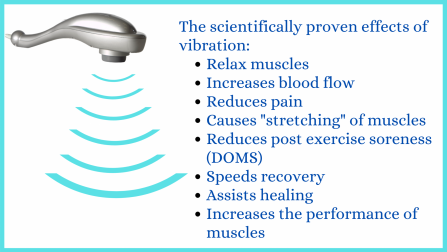
The vibrations from a vibration massager penetrate and have the therapeutic therapeutic effects as shown in this diagram.
Using vibration massage is extraordinarily easy. The following guide has advice and precautions, but essentially all you need to do is sit the head/pad of the machine on where you want to massage and let the vibrations penetrate.
Vibration massage usage guide
This is by far the easiest, safest and most effective of the home techniques, but you need a proper vibration massager, and as discussed in our guide Why most massagers are a waste of money , most of the vibrating massagers you can buy are not suitable.
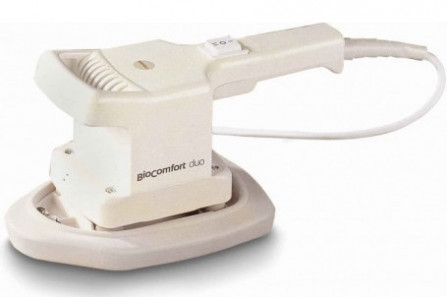
This pic is of a professional model vibration massager. You can see the pad that sits on the surface and sends in vibrations. While this machine is designed for professionals to use on their patients, properly designed personal use vibration massagers have ergonomically designed handles to allow you reach and apply this therapy anywhere on your body.
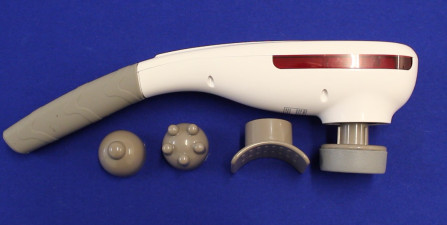
Most vibrating massagers built for consumer use are built to look good on shop shelves rather than be serious therapeutic devices. These usually have low powered motors and inadequate mechanisms, so are not capable of delivering adequate vibration.
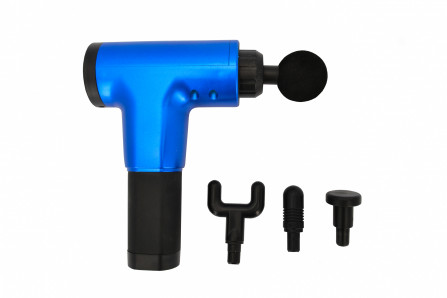
Rather than having a pad that sits on the surface and sending in vibrations massage guns (percussion massagers) are designed to drive their heads in like jackhammers. Because of this they:
When we were looking for a suitable vibration massager for our patients to use all the effective machines seemed to be "professional" products for therapists to use. These were expensive and not designed for self use. Because of this we built our own that pack the effectiveness of a professional unit into an economical one for self use. They are now used, recommended and sold by over a thousand clinics across half the world (some examples). For information about these and where to get them please use these links.
The General Purpose Massager
The Ultimate Quad Head Massager
Read what professionals say about DrGraeme massagers

Most of our massagers sell through colleagues using our machines and recommending the therapy to patients/clients, so we are very happy to send appropriately qualified professionals a complimentary sample machine to trial. For more info please see our Professional sample sample page .
Study |
What was done |
What was found |
|---|---|---|
Reviewed 11 studies related to the effects of vibration on muscle strength |
Most studies reported a significant improvement in muscle strength following the application of vibration |
|
Review of seven studies related to the application of vibration to older people suffering from muscle loss |
Both whole body and locally applied vibration improved muscle strength |
|
10 healthy males were fatigued using 10 sets each of wrist flexion exercises. 10 minutes of 45 Hz vibration was applied 1 hour post exercise then twice a day. |
Resulted in greater strength and tissue oxygenation when measured 1, 24 and 48 hours post exercise. |
|
Applied vibration after exercise then each day for 4 days |
Good reduction in soreness and increase in flexibility |
|
Compared reduction of post exercise pain for massage vs 50 hz vibration. Patients were assess 24, 48 and 72 hours post exercise |
Both reduced pain. 5 minutes of vibration gave slightly better improvement than 15 minutes of massage |
|
Used 50 Hz vibration before exercising |
Helped prevent post exercise soreness (DOMS) |
Study |
What was done |
What was found |
|---|---|---|
Review of 29 studies related to the effects of massage on performance and recovery |
No evidence of improved strength, endurance or fatigue. Massage gave a small improvement in post exercise soreness and flexibility |
|
Trial using massage on quadriceps muscles after exercise |
Did not reduce post exercise loss of strength. No effect on post exercise pain |
|
Trial of using massage after exercise |
No improvement in performance or soreness |
|
Trial of post exercise massage in older people |
Some reduction in symptoms and impairment |
Note: when conducting trials of foam rollers patients are chosen for suitability, then given excellent instructions and supervision. Even with these optimum conditions the results were only marginal. In the real world people use foam rollers without good instructions or supervision, and sometimes on conditions not suitable for foam rolling. Therefore, in the real world expect even poorer results.
Study |
What was done |
What was found |
|---|---|---|
Review of 75 studies and other scientific papers |
Poor and conflicting evidence of any benefits, plus concern about the potential risks |
|
Review of studies |
Rolling improves flexibility, but these gains decline rapidly after rolling. Effects are not better than standard stretching |
|
Review of 21 studies of foam rolling |
Quote: Overall, it was determined that the effects of foam rolling on performance and recovery are rather minor and partly negligible, but can be relevant in some cases (e.g., to increase sprint performance and flexibility or to reduce muscle pain sensation). Evidence seems to justify the widespread use of foam rolling as a warm-up activity rather than a recovery tool.. |
We are continually adding more information on research and uses. Subscribe below to have us email them to you "hot off the press".

Several years ago Dr Graeme, a Chiropractor practicing in Victoria, Australia was looking for a serious hand held massager his patients could use at home to get the extra quality massage they needed. The ones he found in the shops and on-line for home use looked nice but were not serious, and... read more
Trigger points are those tender lumps in muscles that therapists find. This article covers what they are, what they do, and how they are... Read Article
Tennis elbow is a painful and disabling condition that is said to develop through overuse, but why does it then refuse to heal and defy... Read Article
If you suffer from shoulder pain that won't go away you're not alone. Studies show that only 21% of sufferers are better after 6 months.... Read Article
Most sports rely on some sort of muscular coordination and timing. Typically the brain receives some sort of stimulus or information. ... Read Article
There are a variety of systems of “pressure points” used for health benefits and to relieve pain. They all have their devoted advocates... Read Article
As a Chiropractor for over 27 years a lot of information I’ve seen about chiropractic adjustments has been misleading or just plain... Read Article
Trigger point release is a general term that describes procedures that relax tension and relieve pain in muscles that contain trigger... Read Article
Most professional athletes and sports clubs make heavy use of massage type treatments. The ability to do self massage using a hand held... Read Article
In this article we will discuss the health and wellness benefits of regular or wellness massages that have been scientifically... Read Article
According to the results of many clinical trials massage can give great relief for fibromyalgia. However, while some massages worked... Read Article
Using a hand held massager is simple. You place the vibrating head on the muscle, making good contact, and allow the vibrations to... Read Article
Vibration massage is an excellent therapy. However, too many massage guns fail to deliver this because: they use percussion which is less... Read Article
Do not refresh or leave this page until loading complete.